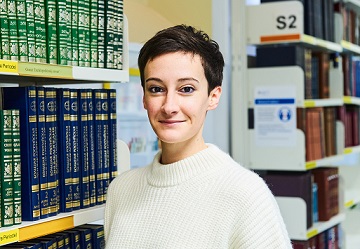Dr. Julia Bavouzet

Dr. Julia Bavouzet
Julia Bavouzet is a Postdoc researcher in history, working on Hungarian administration in the 19th and 20th centuries. She holds a PhD from the University of Paris-Nanterre, where in 2017 she defended her dissertation on Hungarian high civil servants during the dualist era (forthcoming publication at the Presses universitaires de Rennes). For this work, she was awarded the Hungarica PhD Prize.
She continued her research on the Hungarian state administration at the Centre de Recherche Europes-Eurasie (Inlaco, Paris) and was awarded with a research grant from the OeAD to join the Institut für Österreichische Geschichtsforschung at the University of Vienna. She is now working on a research project focusing on transforming statehood in Hungary after the Great War.
Research Project
State transformation in Hungary after the First World War
This project proposal aims at developing a synthetical approach of the questioning around the great transformation of 1918 in Central Eastern Europe. Using the Hungarian case as a springboard, it challenges the paradigmatic opposition between rupture and continuity and highlights the complexity of state transformation, imperial legacies, crisis and reforms that surround the 1918 caesura.
Research interests
- Transforming statehood in the Habsburg monarchy and its successor states
- Social history of state elites
- Mobility and refugee crisis
- Anthropology of bureaucratic practices
Latest publications
- Bavouzet Julia, Hungarian Ministry of the Interior and its Civil Servants in the Post-war Turmoil, in: Peter Becker, Therese Garstenauer, Veronika Helfert, Karl Megner, Guenther Steiner and Thomas Stockinger (eds.), Hofratsdämmerung? Verwaltung und ihr Personal in den Nachfolgestaaten der Habsburgermonarchie 1918 bis 1920, Wien, Böhlau Verlag (2020), pp. 113‑136.
- Bavouzet Julia (2020), Hivatali eskü a magyar közszolgálatban [The official oath in the Hungarian public administration], in: AETAS-Történettud ományi folyóirat, 3 (2020), pp. 62‑87.
